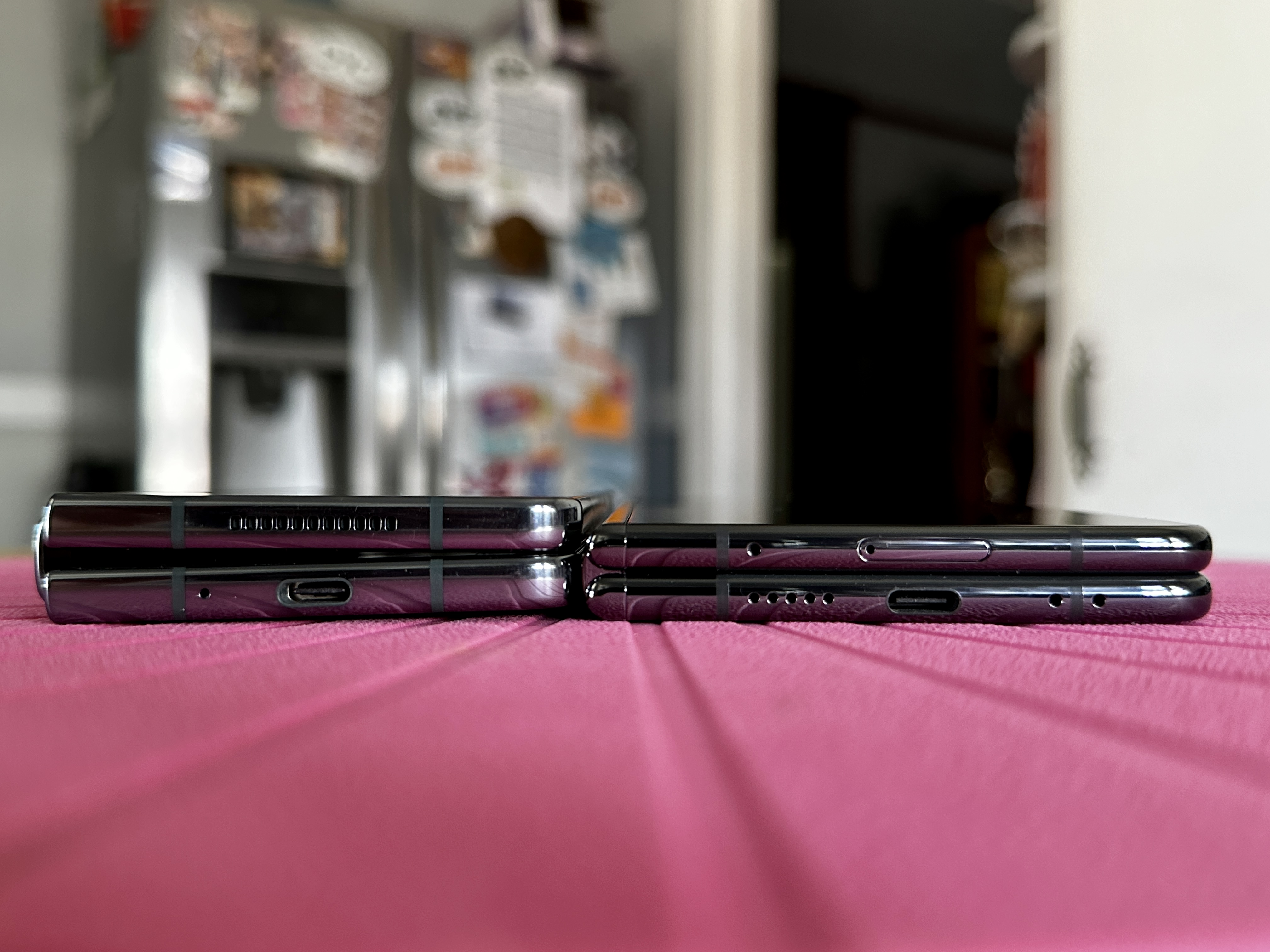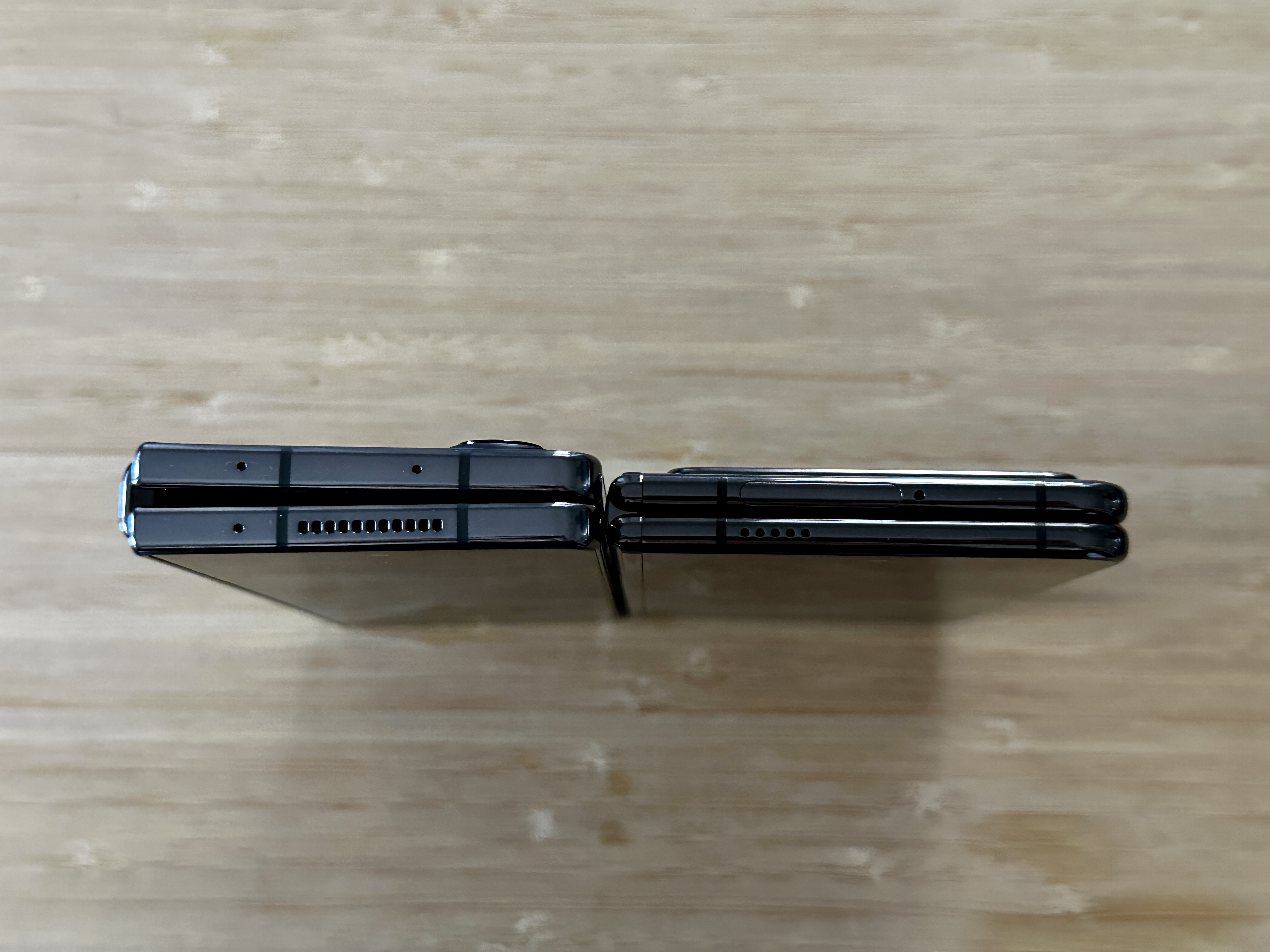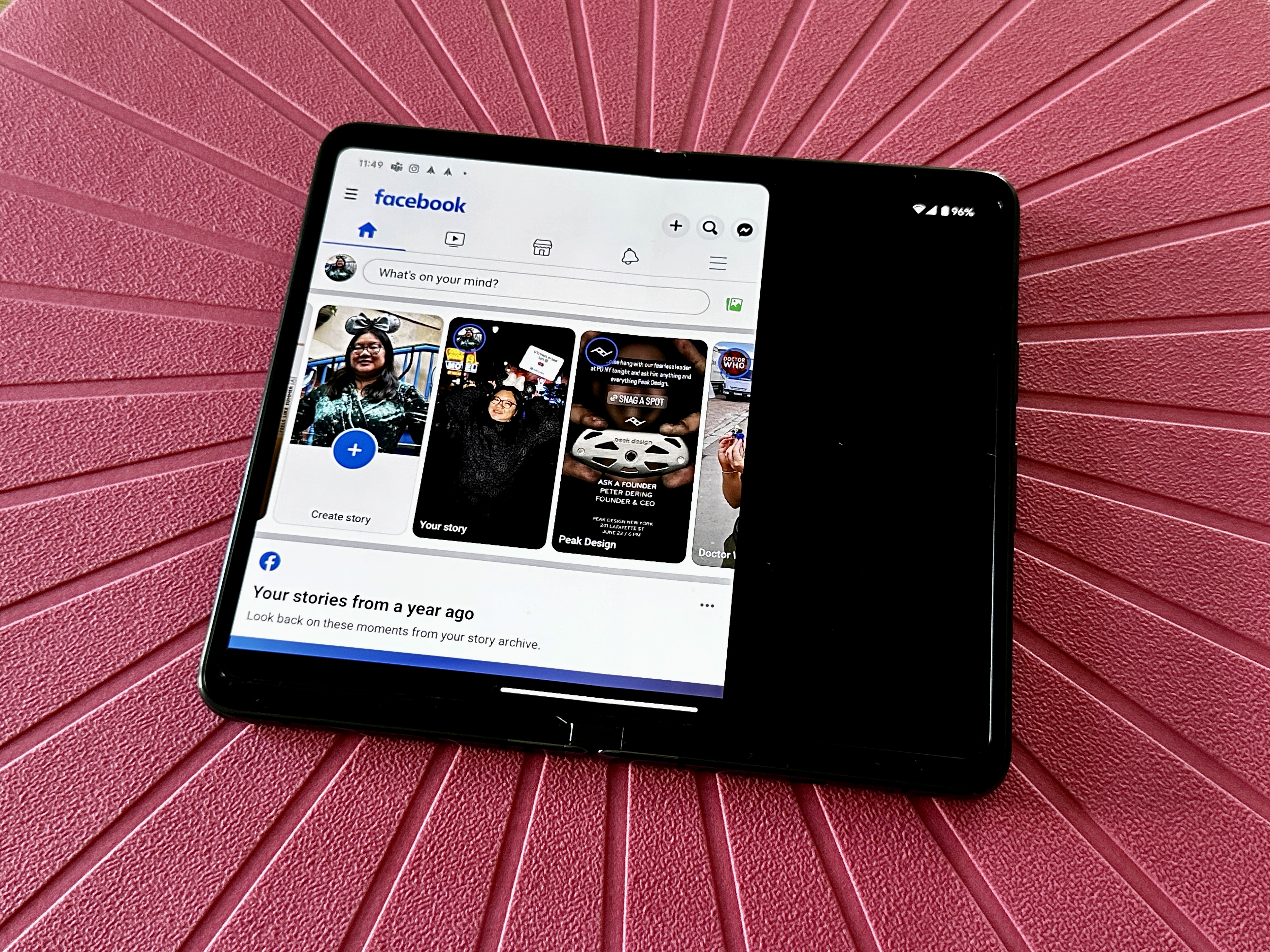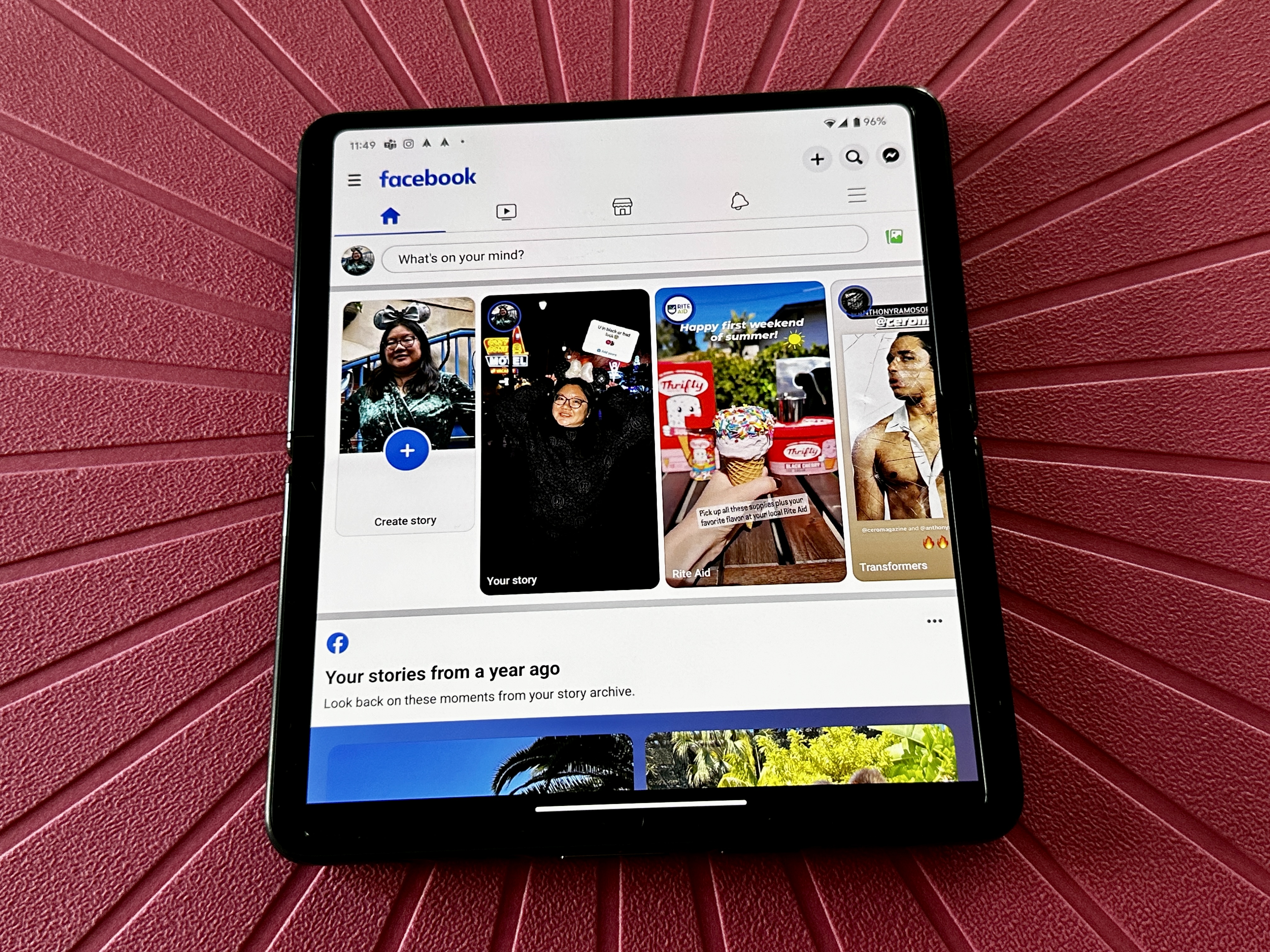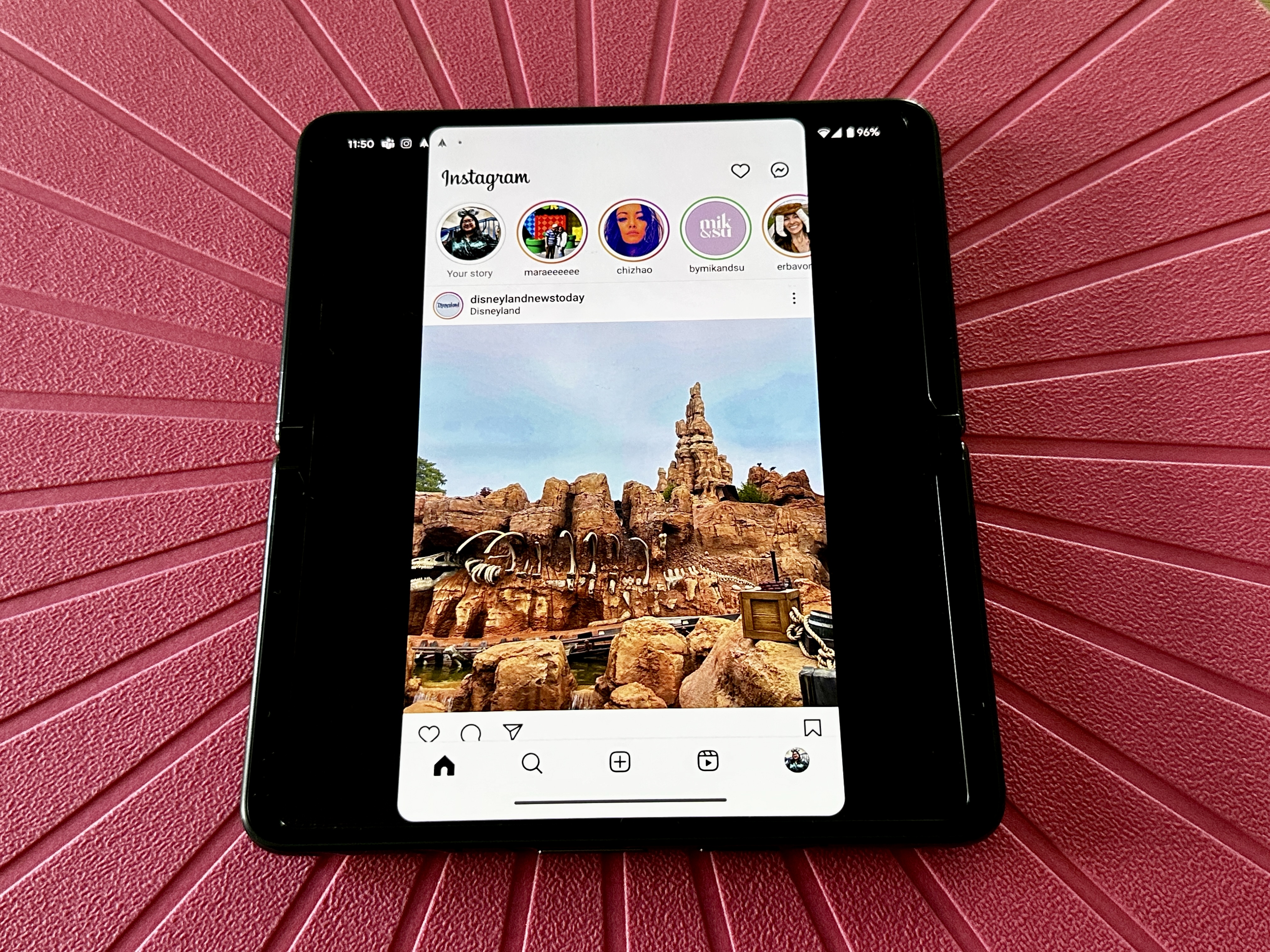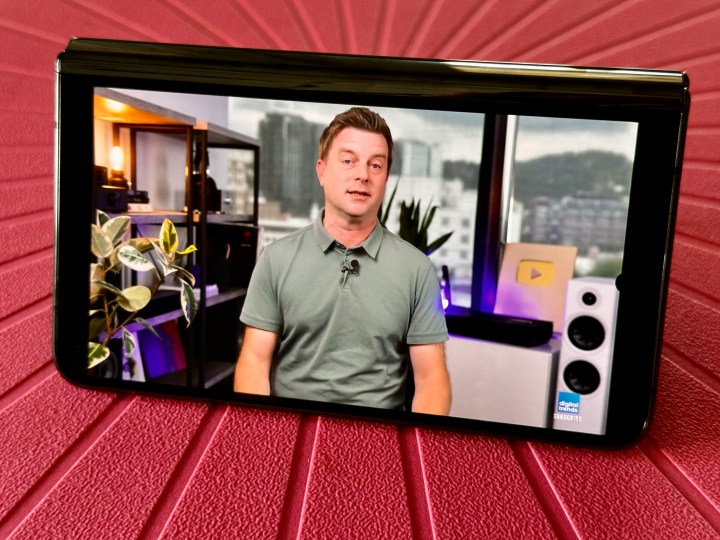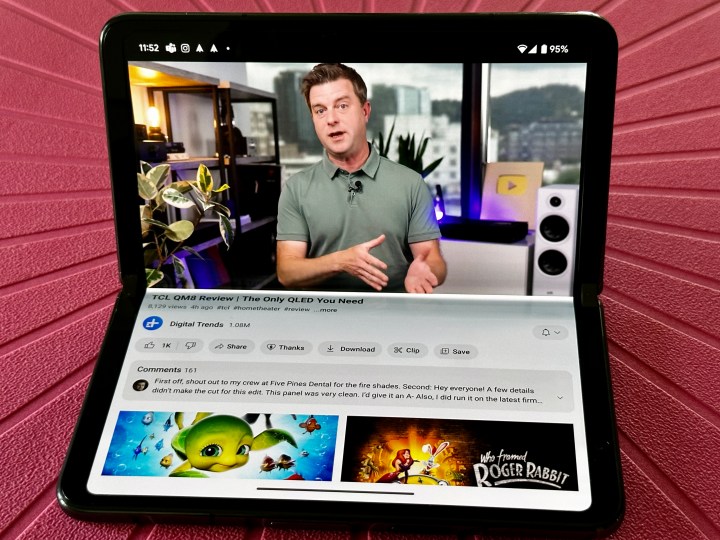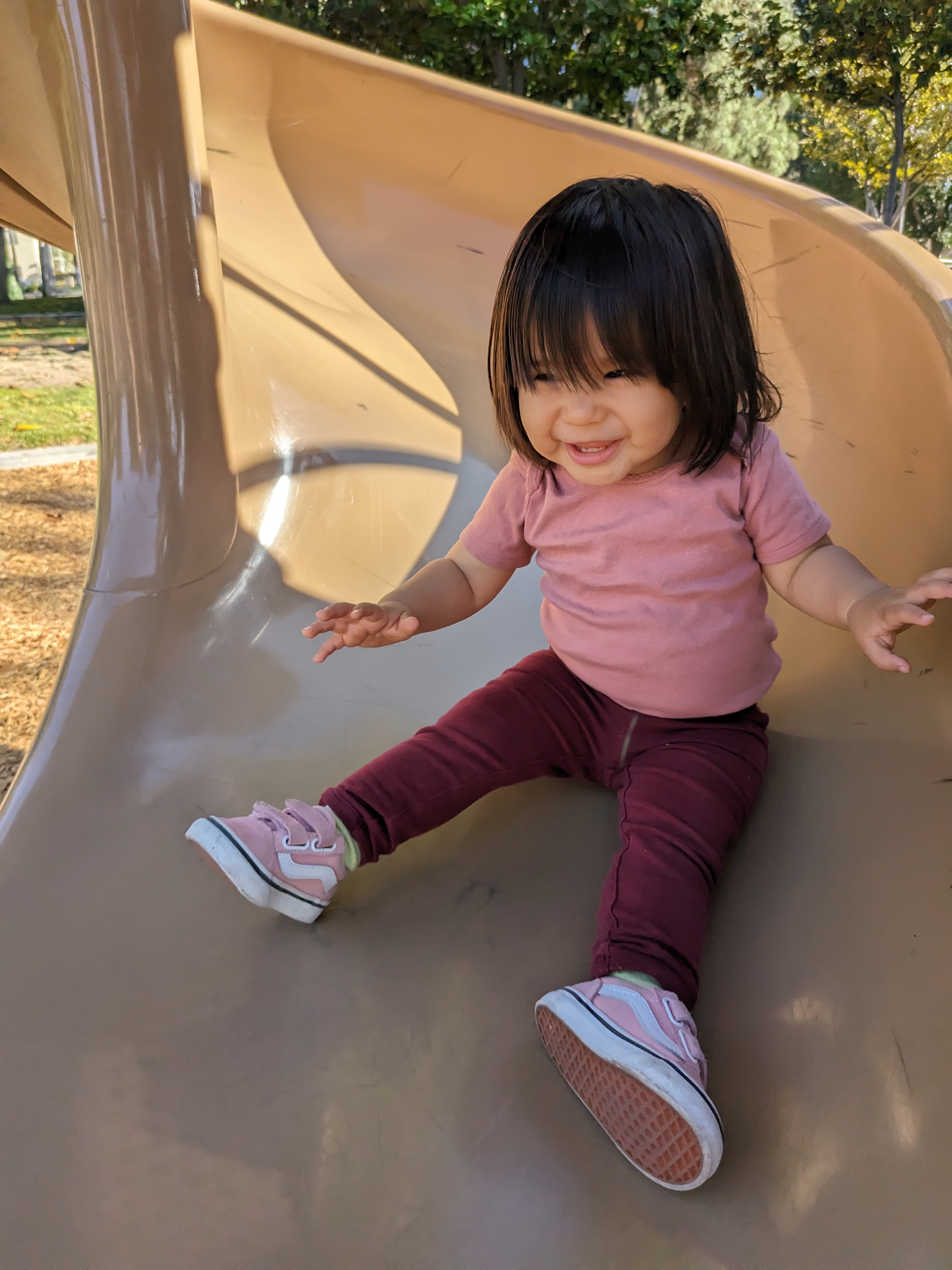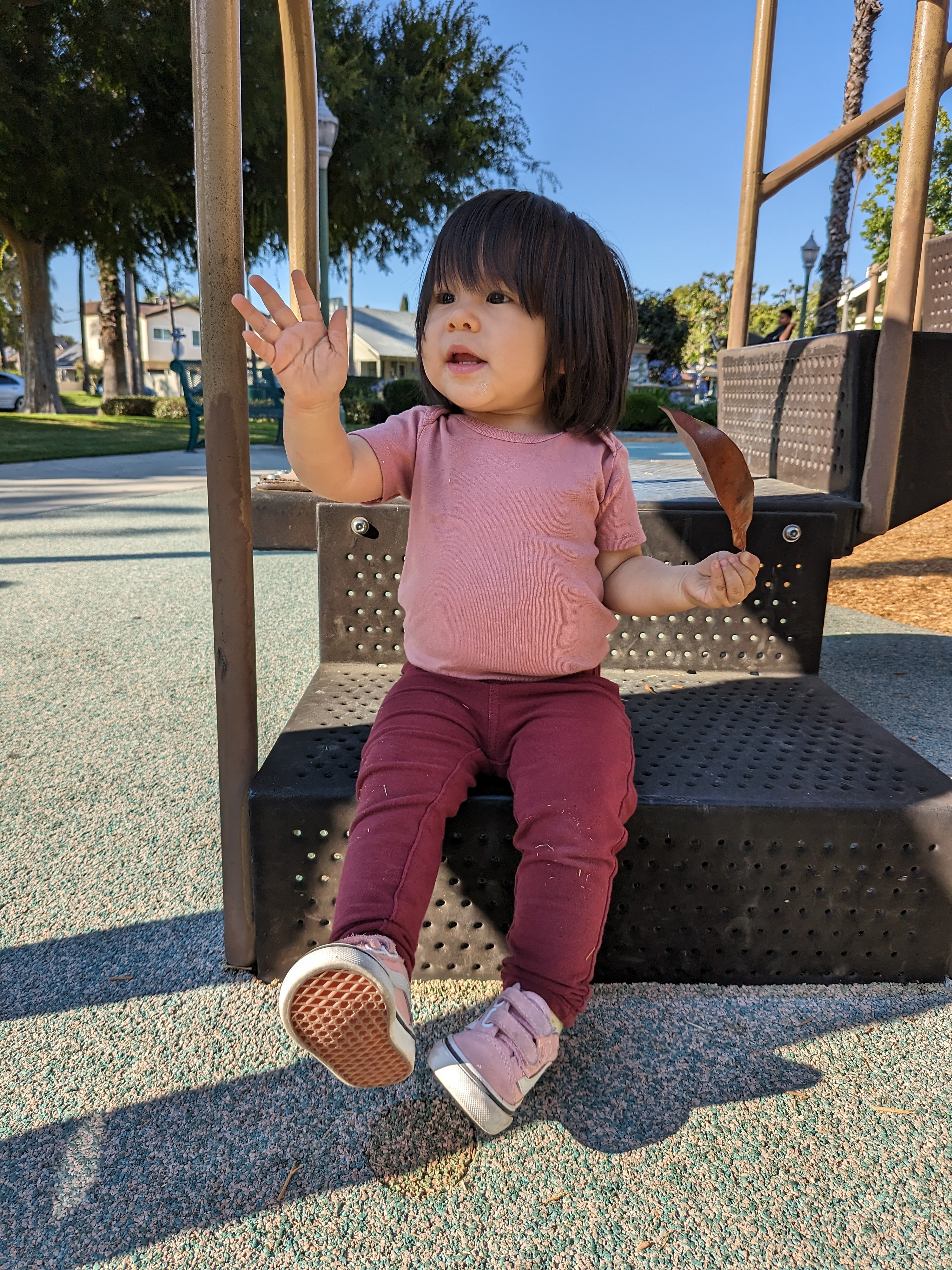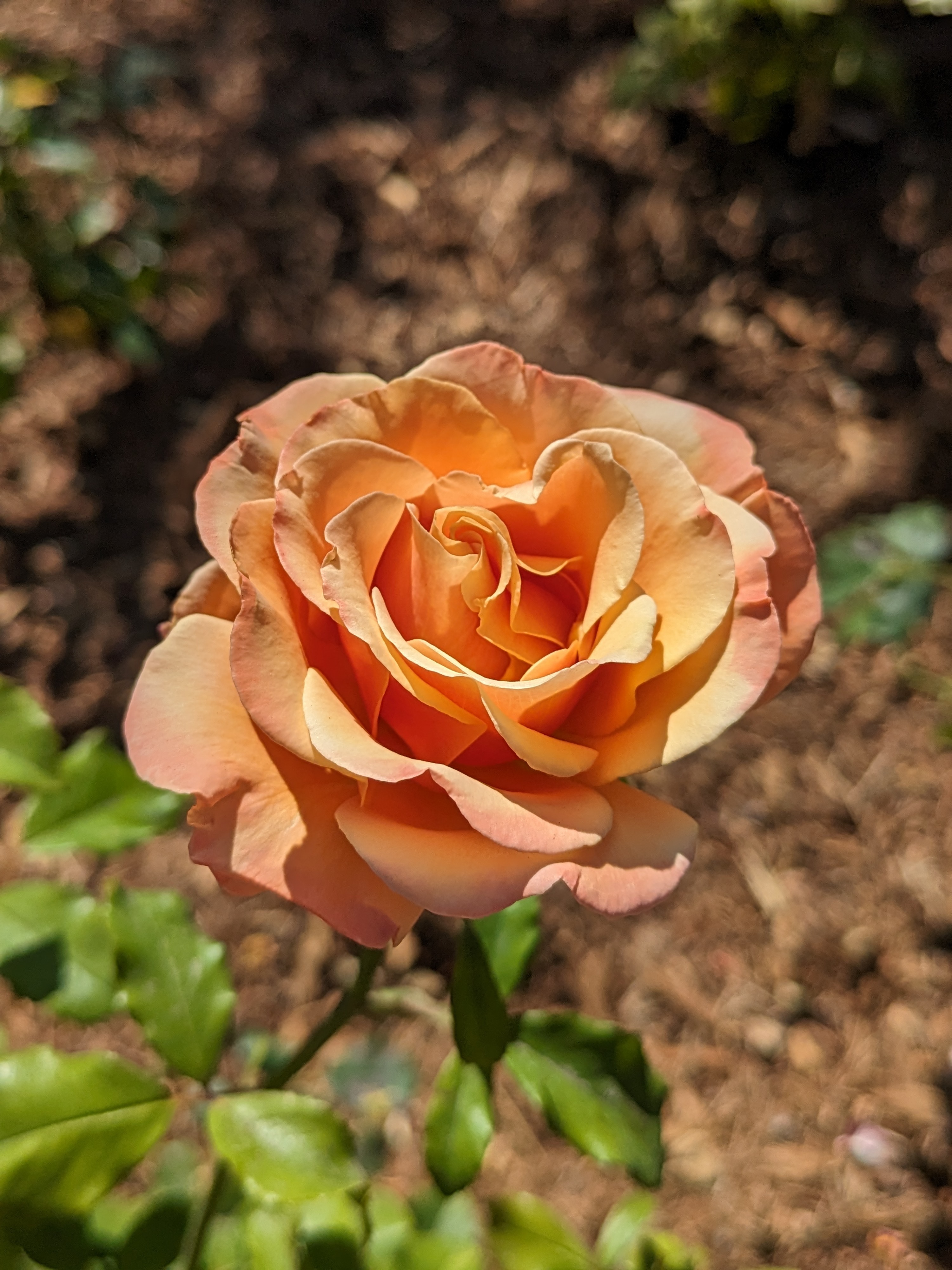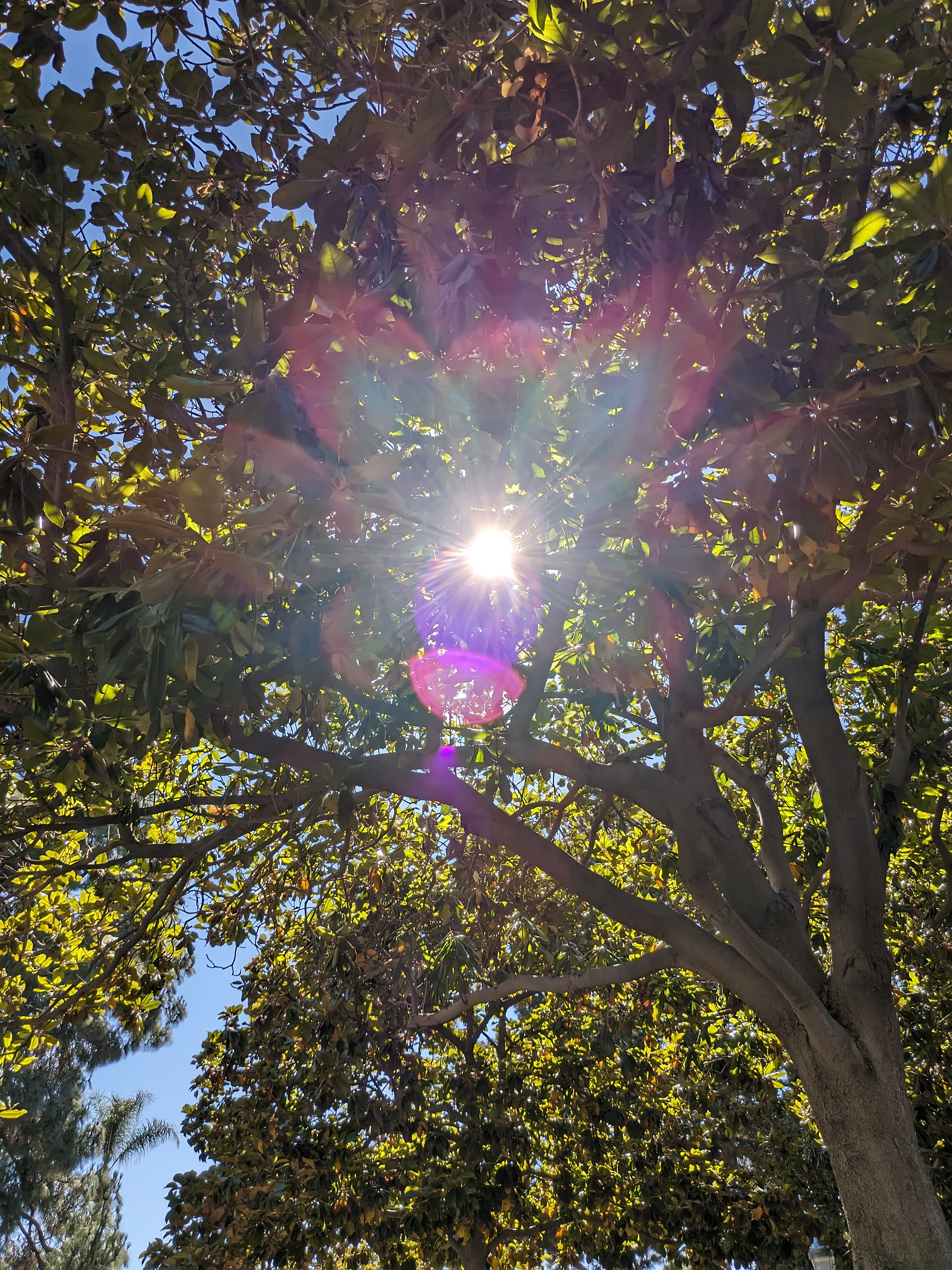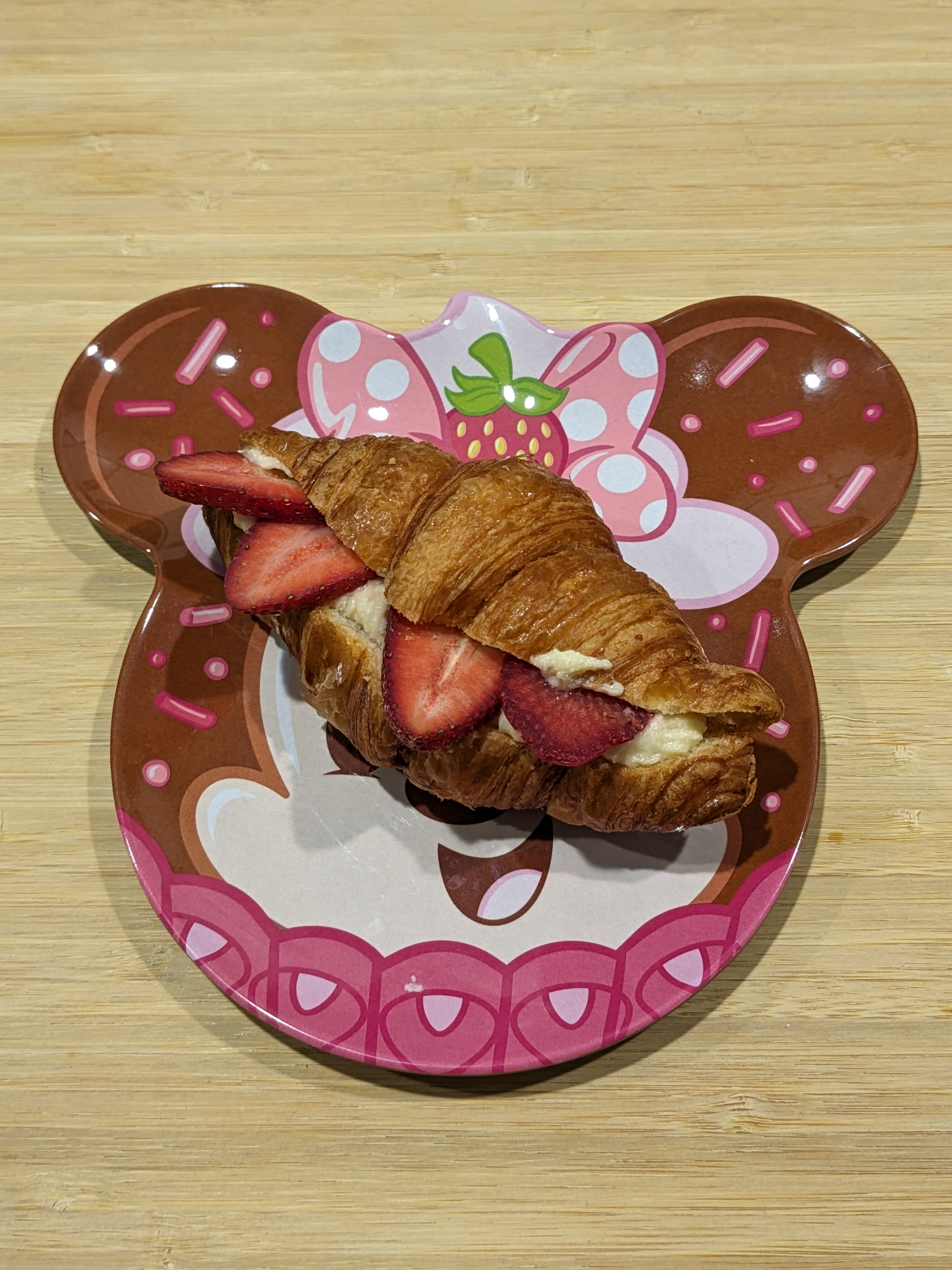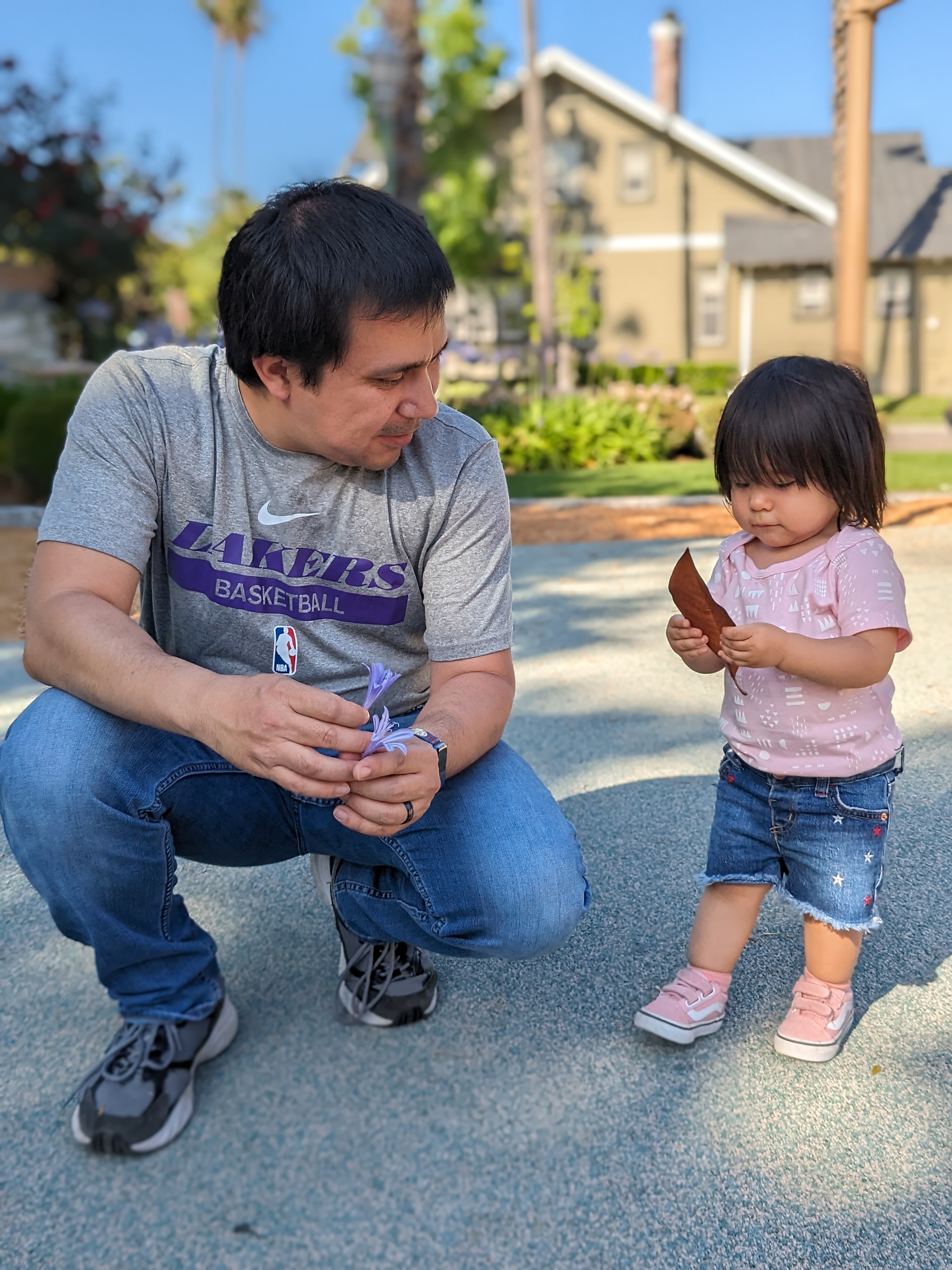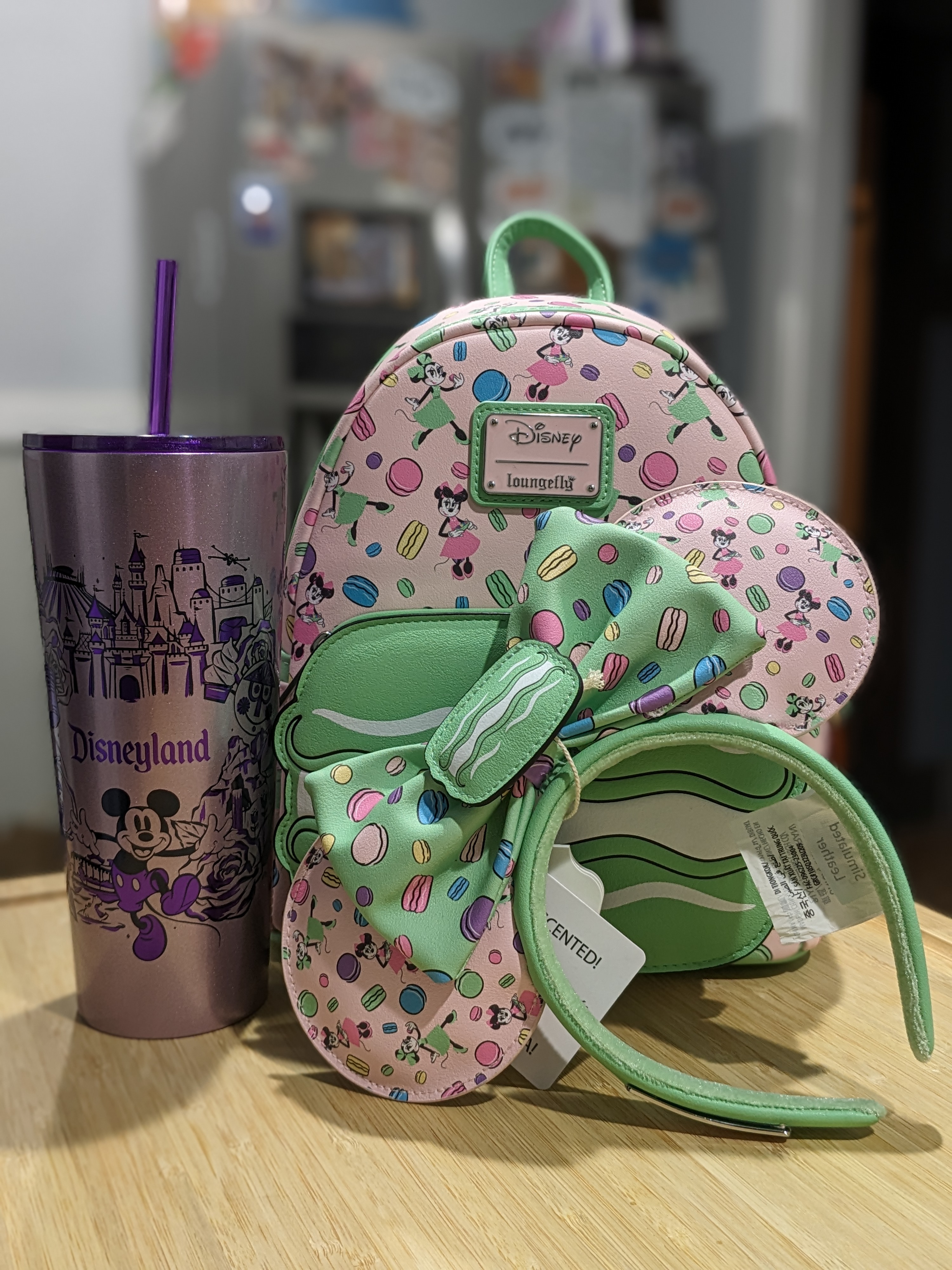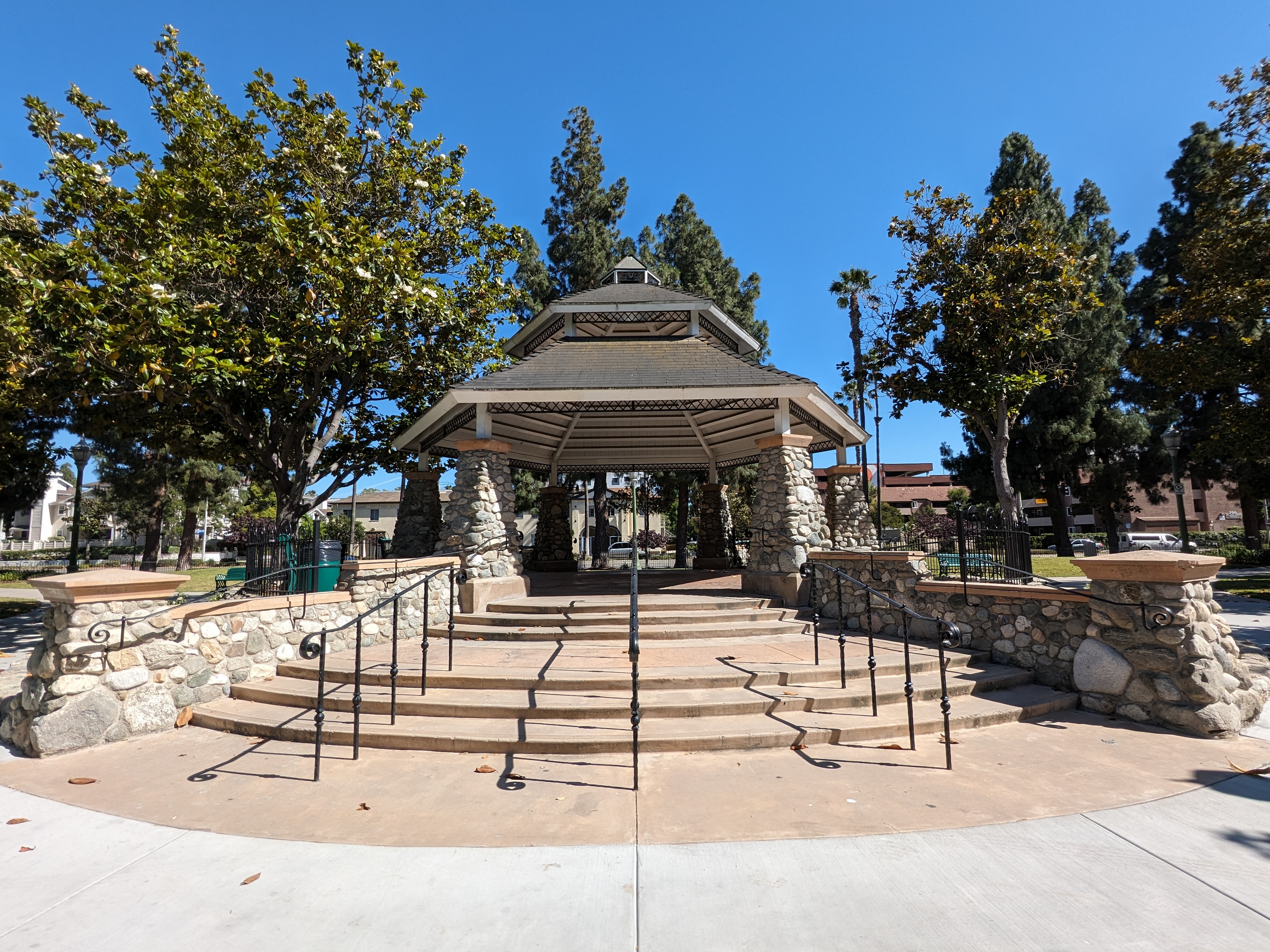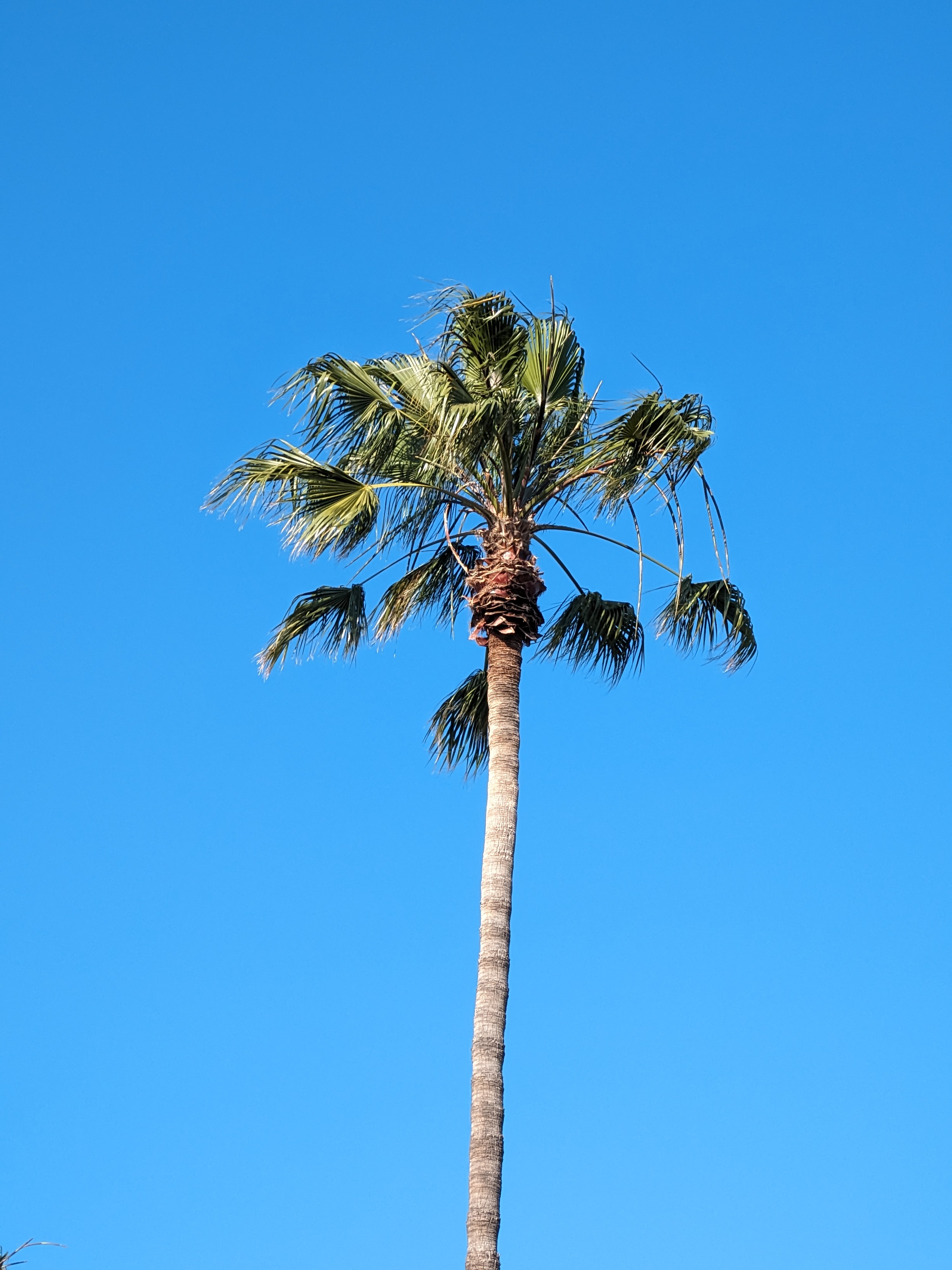“The Google Pixel Fold has a lot to love. With a comfortable design, excellent displays, and fantastic cameras, it's a true contender in the foldable race.”
- Solid build quality
- Great cover display size
- Barely any gap when closed
- Beautiful displays
- Fantastic cameras
- Fast performance
- Cover display scratches easily
- One-day battery life
- Poor wireless charging options
After a few years of speculation, the Google Pixel Fold is here. It’s another one of those firsts for Google, as this is the company’s very first foldable Android smartphone.
Foldables have been around for quite some time now, but in the U.S., it’s pretty much just Samsung in the market with the Galaxy Z Fold series. Across the pond, there are a few more foldable options with the Honor Magic Vs and Huawei Mate X2, but those are a bit disappointing, and overall, there are still not a lot of options.
But Google is now entering the foldable market with the Pixel Fold, and it’s surprisingly good — but not without flaws.
Google Pixel Fold: about this review
The Google Pixel Fold launched on June 27, 2023. Christine Romero-Chan originally published this review on June 26, 2023. We’ve since updated the review with reports of durability concerns on July 10, and we have also added a six-month later update in November 2023.
We also changed the original review score of 8/10 to 7/10 on account of how the Pixel Fold has aged and its increased competition.
Google Pixel Fold: six months later

Since the Google Pixel Fold came out, Samsung has released the Galaxy Z Fold 5, and OnePlus also came out with its first foldable, the OnePlus Open. With more competition now available, the Google Pixel Fold is a little less impressive.
While both the Pixel Fold and OnePlus Open have a good-sized cover display compared to the Z Fold series, the OnePlus Open edges out the Pixel Fold with the inner display. The biggest flaw with the Pixel Fold’s inner screen is that it’s way too reflective, which makes it difficult to use outdoors — especially if it’s bright out since it only reaches 1,450 nits peak brightness. However, the OnePlus Open fares much better with an anti-reflective coating on the inner screen, and both the cover and inner screen can get up to 2,800 nits peak brightness, making it much easier to use in direct sunlight.
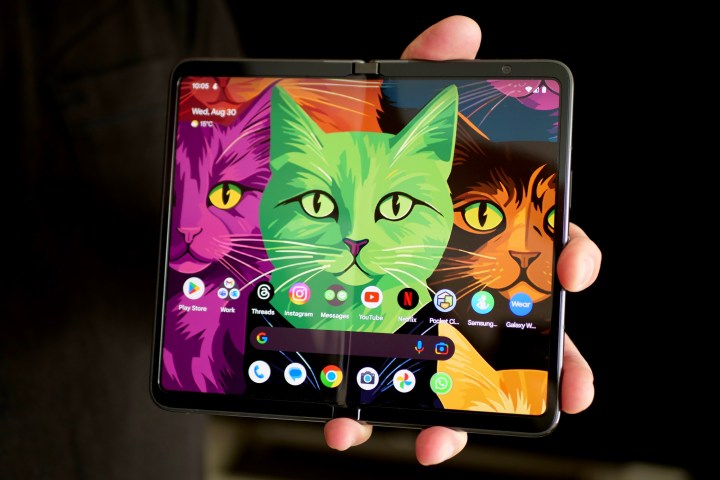
And though the Pixel Fold has a firmer hinge that allows you to use it in a clamshell mode without any issues, it needs a bit of force to open fully flat. The OnePlus Open’s Flexion Hinge snaps into a fully flat position past a certain angle, which makes it effortless to open flat. But this also means it can’t really stay propped open in clamshell mode past about 135 degrees, as it will bounce fully open. So for this, it’s a case of which you want more — clamshell mode at any angle or open fully flat. OnePlus also has the bonus of a much less noticeable crease with its hinge, while the Pixel Fold crease is almost always noticeable.
Lastly, the Pixel Fold is the heaviest foldable out of the three, weighing 283 grams. The Galaxy Z Fold 5 is only 253 grams, and the OnePlus Open is the lightest of them all at just 239 grams. The hefty weight of the Pixel Fold may not always be noticeable, but it can make taking one-handed photos a little harder compared to other phones.
The Pixel Fold is still a good foldable in late 2023, and it remains a strong first attempt from Google. But compared with the other competition that’s since emerged, it’s not quite as spectacular as it once was.
Google Pixel Fold: design
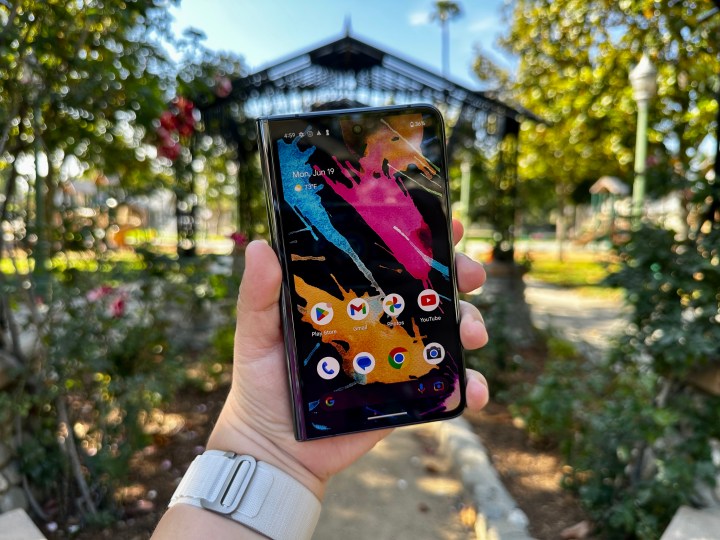
The design of the Google Pixel Fold is one of the best things about it, especially when compared to the current competition.
The Pixel Fold chassis is a blend of glass, plastic, and aluminum. The folded front and back feature Gorilla Glass Victus, while the unfolded front is plastic. The frame itself is made of aluminum, and the device has an IPX8 water-resistance rating.
When closed, instead of being super narrow and tall like the Samsung Galaxy Z Fold, the Pixel Fold is shorter and wider with a 5.8-inch cover display — making it look and feel like a regular-sized phone (by comparison, the Galaxy Z Fold 4 cover display is 6.2-inches).
The Pixel Fold feels good to open, as there’s not too much friction when pulling the halves apart, but it’s not going to open up accidentally either. When unfolded, it’s much wider and more squat-looking than the Z Fold 4, which unfolds into more of a square. Despite the differences in sizes and looks, the Pixel Fold also has a 7.6-inch inner screen, just like the Galaxy Z Fold 4. It is important to note that while both foldables have the same inner dimensions, the Pixel Fold opens up in landscape/horizontal orientation by default, whereas the Samsung Galaxy Z Fold 4 opens up in portrait/vertical orientation, which affects how certain apps open.
I had hopes that the crease would just disappear with the Pixel Fold, but that’s not entirely the case. You definitely know that it’s there.
The size of the Pixel Fold is one of my favorite things about it.
The shorter and wider size of the Pixel Fold, when closed, is one of my favorite things about the device. I loved the 5.8-inch size of the iPhone X, and the Google Pixel Fold replicates that with the cover display, making it pretty comfortable to use (even one-handed — and I have smaller hands than most people) despite being thicker than a normal phone.
Of course, when I say thicker than most phones, that’s to be expected because it’s a foldable; it’s more akin to two phones stacked on top of each other, really. Google also designed the hinge of the Pixel Fold so that it looks like both halves are flat with no gap between them, but upon further inspection, there is still a tiny gap — you just don’t notice it until you look really closely for it. It’s still much better than the Z Fold 4, which has a very apparent wedge-shaped gap that dust and debris could get into easily.
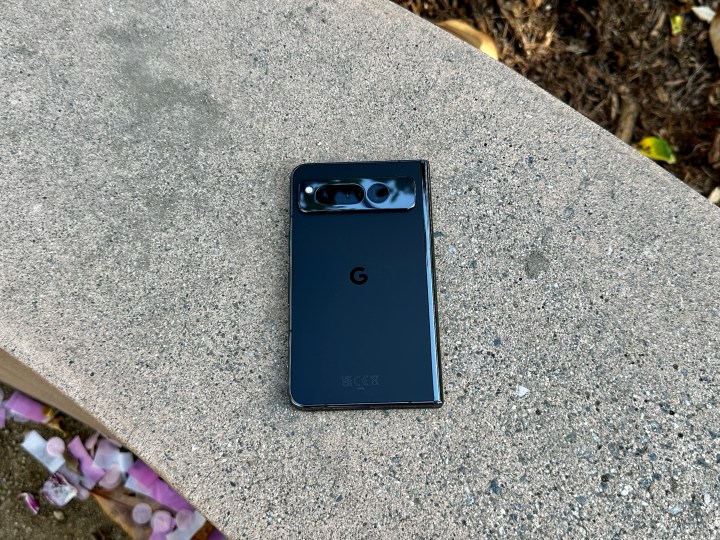
Aside from being a foldable, the design of the Pixel Fold isn’t drastically different than the rest of the Pixel 7 lineup, which includes the affordable Pixel 7a and the powerful Pixel 7 Pro. The back of the Pixel Fold has the classic camera bar, though it doesn’t come in from the aluminum frame’s edges like on the standard Pixels. Instead, it’s a rectangular module that houses the triple-lens camera array. It does stick out a tiny bit like most camera bumps these days, but it’s not as bad as it could be.
Along the right side of the frame, you’ll find the volume button and power button, which also houses the fingerprint sensor, which has been fast and responsive in my testing. The bottom edge is where the USB-C charging port is located, as well as half of the stereo speaker setup (the other half is on the top).
The overall dimensions of the Pixel Fold are 158.7mm by 139.7mm by 5.8mm when unfolded, and it’s 139.7mm by 79.5mm by 12.1mm folded. The total weight is a hefty 283 grams, which is almost 10 ounces. The heaviness of the Pixel Fold is not super appealing, but it’s to be expected for a foldable, especially when it’s made of premium materials like glass and aluminum. Despite this, I still found the Pixel Fold to be comfortable to use, even one-handed, for the most part. The glass back does make it a tad slippery, though, so I’d recommend using a good Pixel Fold case.
Google Pixel Fold: screens
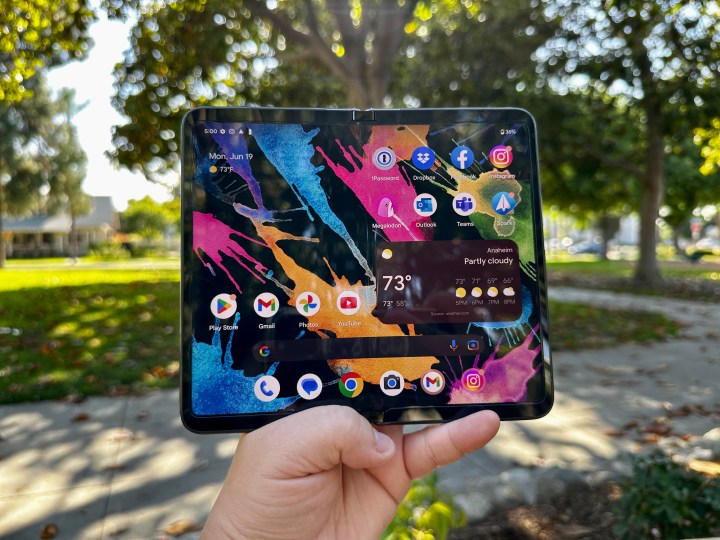
The cover display on the Google Pixel Fold is a 5.8-inch OLED panel with 1080 x 2092 resolution at 408 pixels per inch (ppi), a 17:4:9 aspect ratio, and a 120Hz refresh rate. It reaches 1200 nits brightness in typical use, and peak brightness goes up to 1550 nits. It’s protected with Gorilla Glass Victus, not Victus 2, so it’s a bit dated in terms of durability. I noticed some tiny micro scratches on the cover display already, so I’d recommend a screen protector.
With the inner display, we have a 7.6-inch plastic foldable OLED panel with an 1840 x 2208 resolution at 378 ppi, HDR10+, and typical brightness that goes up to 1000 nits (or 1450 nits at peak brightness). Again, the inner display opens up to landscape/horizontal orientation, which affects how certain apps display themselves on the inner screen.
So far, in my testing, I’ve been very impressed with the overall quality of the displays on the Pixel Fold. Everything looks crisp and sharp on both the cover display and the inner screen, and the colors are bright and vivid. Though the peak brightness isn’t quite the same as the iPhone 14 Pro levels that I’m used to, it’s still usable outdoors in direct sunlight. However, the inner screen is very reflective, which can make it a little hard to use if it’s particularly bright outside.

The 120Hz refresh rate on both the cover display and the inner screen also makes for a pleasant experience. Scrolling is incredibly smooth, animations are fluid, even when transitioning between apps, and everything feels super responsive. I played some Diablo Immortal on the inner display since it’s optimized for it, and everything ran nicely without any hiccups or choppiness — even when I turned up the graphics a bit from the default settings.
On the cover display, the selfie camera is located in a hole-punch cutout, similar to the other Pixel 7 devices. The cover display camera also doubles for Face Unlock. The inner display has a slightly thicker bezel surrounding it, so the front-facing camera sits hidden in the bezel on the right half. Unfortunately, Face Unlock does not work on the inner camera.
So far, I’ve been enjoying the screens on the Google Pixel Fold quite a bit. My only complaint really is that the crease can still be noticeable, but mostly when it’s a dark background on the display. When it’s lighter web pages and apps, the crease isn’t too bothersome. Honestly, the more you use it, the more you just get used to it, similar to how I felt about the iPhone notch.
Google Pixel Fold: durability concerns
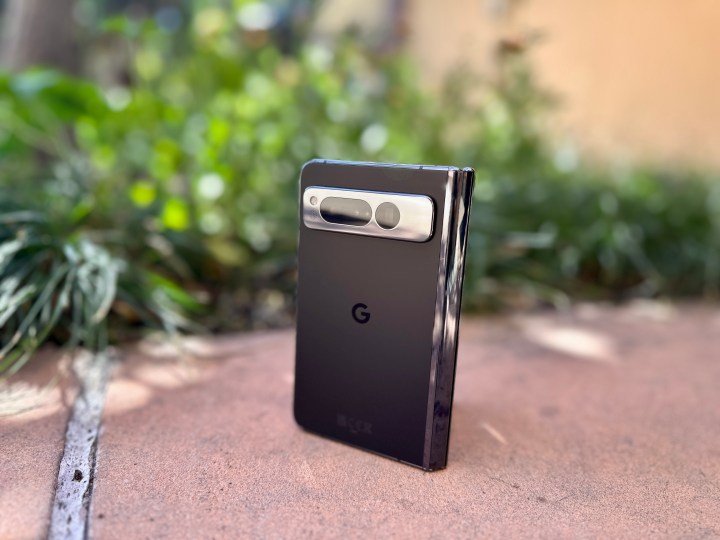
Now that the Google Pixel Fold is available to the public, there have been reports concerning the durability of the foldable. Quite a few of the issues seem to be with the inner display, with a user claiming that the inner screen protector is already peeling on their Pixel Fold unit. Others have gotten broken pixels on the screen that seem to form a line across the inner display, and others claim that there small dents and surface imperfections between the bezels and the screen protector.
And worst of all is Ron Amadeo at Ars Technica, who experienced half a dead display on the inside because debris got caught right in between where the bezel meets the screen protector. This ended up puncturing the display and causing half of it to die.
While I personally have not experienced these display issues, I have been experiencing an odd pop/click sound when opening up the Google Pixel Fold to use the inner display. The sound has been persistent, though it seems to disappear after I’ve opened up the Pixel Fold in quick succession. Regardless, I’ve sent that unit back to Google for them to investigate, and I’m now using a replacement Pixel Fold in its place. Should the popping happen again — or if any new issues come up — I’ll be sure to update the review and let you know what’s going on.
Google Pixel Fold: performance and software

Inside the Google Pixel Fold, you’ll find the Google Tensor G2 chipset, 12GB RAM, and either 256GB or 512GB UFS 3.1 storage. For what it’s worth, the review unit I was sent is the 256GB variant. Unfortunately, the Pixel Fold does not have a microSD card slot, so whichever storage you pick is what you’re stuck with.
On the software front, you get Android 13 out of the box (now upgraded to Android 14). While Google has not specified exactly how many software upgrades the Pixel Fold will be getting, we assume it will be the same three software version upgrades and five years of security updates as the rest of the current Pixel lineup.
It is important to note that some of the key features of the Pixel Fold that Google showed off during the Google I/O 2023 keynote will not actually be available until you get Android 14. This primarily involves the dual-screen interpreter mode, which lets people use both the inner and outer screens to translate a live conversation.
In my testing, the Pixel Fold performs very well. Apps open up quickly, switching between apps is fast, and everything is snappy and responsive. I experienced no lag or choppiness when it came to doing what I needed to do, and no crashes when using apps. The fingerprint sensor actually works well, as it’s been very accurate 99% of the time (I did not have quite the same experience with the Pixel 7).
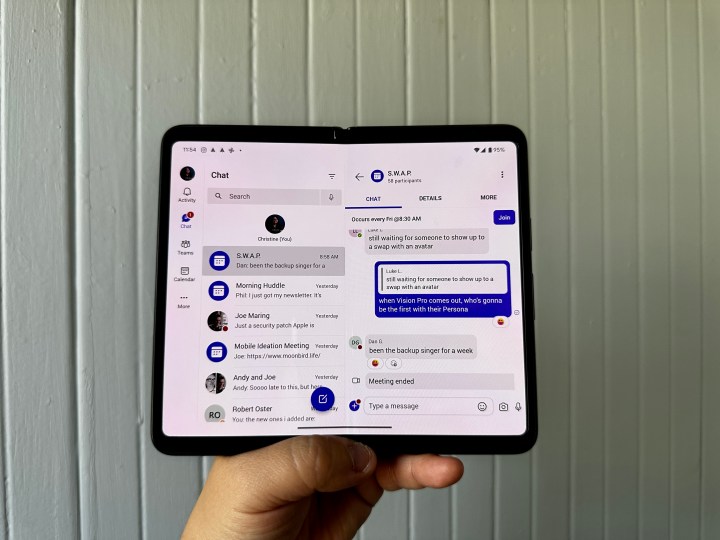
I have used the Pixel Fold daily for all of my regular tasks, which includes checking Microsoft Outlook and Teams for work and Gmail and Spark for my personal emails, using Instagram and Facebook, streaming music on Apple Music and video on Disney+, taking a ton of photos of my very active toddler and other shenanigans and then uploading them to Family Album app, and more. I find myself picking up the Pixel Fold a lot throughout the day to use, and it has no trouble with the tasks I need to use it for.
Since the Pixel Fold is more like a tablet when unfolded, Google has optimized most of its first-party apps to take advantage of the larger screen real estate on the inner display. There are a lot of third-party apps that are also optimized, such as Diablo Immortal, which I tested, and others like Dropbox, Evernote, Microsoft Outlook and Teams, and more.
But when an app doesn’t support the larger display, it can look pretty bad — it’s either taking up half of the inner display or has two black bars surrounding it. However, sometimes you can get an app to look better by rotating the device around, as it will fill up the screen if you rotate it 90 degrees instead for the vertical orientation. This is probably due to the developers of the apps not having them optimized yet, so hopefully, that changes in the future. For now, if an app doesn’t look good in the inner display, I simply use it on the cover display.
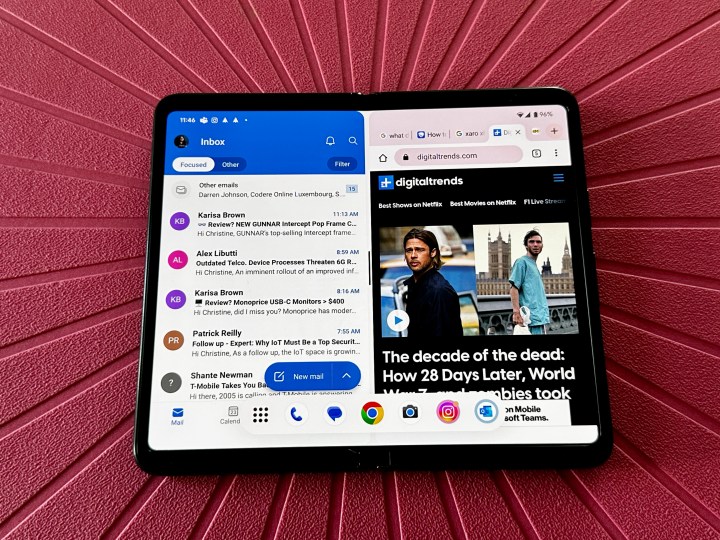
The Google Pixel Fold is also decent at multitasking thanks to the taskbar and split-screen features on the inner screen. In fact, it feels pretty natural and intuitive, like on Apple’s iPadOS. Bringing up the taskbar is done by doing a slow swipe from the bottom of the screen while you’re in an app, and you can also access all of your apps from here too. In order to activate split-screen, just drag and drop an app icon into the area of the screen that you want to view it in.
The Pixel Fold’s software feels natural and intuitive.
Once you’re in split-screen mode, you can resize the windows by dragging the middle vertical bar, pair specific apps together (Chrome and Gmail, for example), and switch the sides for each app by double-tapping that divider. As someone who has used iPads before, this all feels intuitive and natural for a foldable. However, you’re limited to only two apps running in split-screen on the Pixel Fold. On the Galaxy Z Fold, you can have more than two apps running at once, so if you need that functionality, the Pixel Fold may not be for you.
One of my favorite reasons to use the Pixel Fold is because it has Tabletop mode. This lets you open up the Pixel Fold at a 90-degree angle and use it similarly to a laptop on a flat surface. This is great for watching videos (you can also use prop it up like a tent with Tent mode to view on the cover display), taking selfies, making video calls, and more. It adds a level of versatility with a lot of possibilities.
- 1. Tent mode for YouTube videos
- 2. Tabletop mode for YouTube
I do want to point out that during my testing, I did notice the Pixel Fold getting a bit warm with extended use. Whether that was taking a lot of photos and videos outside, streaming music or video, or playing games — the phone does get warm. This also has occurred on other Pixel 7 phones, so it’s not just the Fold. It’s related to the Tensor G-series chip itself. Hopefully, one day, Google can make it efficient enough so that the devices don’t keep overheating like this.
Despite that, the overall performance of the Google Pixel Fold is pretty impressive. It’s fast, snappy, and responsive. Having the optimized apps for the inner display is great, and multitasking is surprisingly intuitive — as if Google took a page straight from Apple’s book.
Google Pixel Fold: cameras
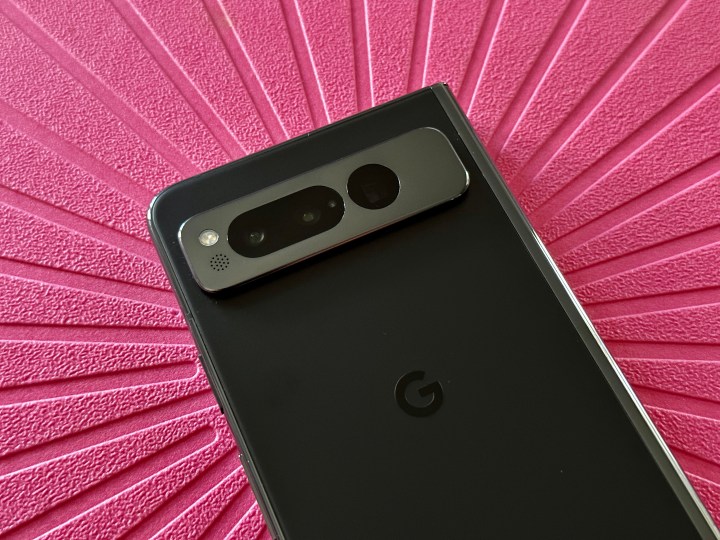
In my experience, there isn’t a Pixel phone that doesn’t take good photos, and the Pixel Fold continues that trend.
The Google Pixel Fold comes equipped with a great triple-lens camera array on the rear. You get a 48-megapixel main camera with dual-pixel phase detection autofocus (PDAF), laser autofocus (AF), and optical image stabilization (OIS). There’s also a 10.8MP telephoto lens with dual-pixel PDAF, OIS, and 5x optical zoom, as well as a 10.8MP ultrawide lens with a 121-degree field of view (FOV).
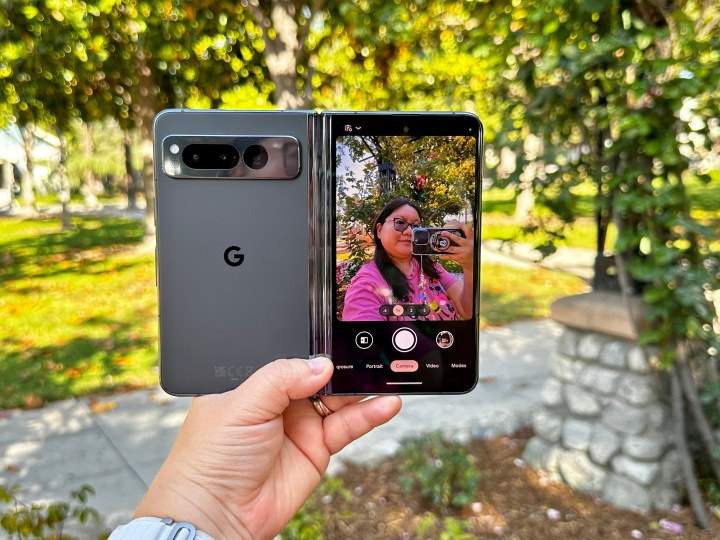
There are two selfie cameras — one for the cover display and another on the inner display. The cover display selfie camera is 9.5MP, while the inner camera is 8MP. You are more likely to use the cover display for selfies, which is why the higher megapixel count on it makes sense. Another option is to use Rear Camera Selfie mode, which lets you use the cover display and rear camera (unfolded) for higher-resolution selfies.
If you shoot video, the Pixel Fold is capable of recording 4K at 30 or 60 frames per second (fps), and 1080p at 30, 60, 120, or 240 fps with the rear camera. The selfie cameras are able to record 4K at 30 or 60 fps, or 1080p at 30 or 60 fps only.
I’ve been thoroughly enjoying using the Google Pixel Fold’s cameras overall. I’ve tried out all of the lenses so far, and the results are good all around. As I said earlier, I’ve had nothing but great experiences with Pixel cameras, as they tend to be very reliable. Photos come out good with vibrant colors that aren’t too intense (unless it’s a super-bright and sunny day, hello summer), and for the most part, skin tones seem true to life — depending on the lighting, of course. The images I’ve managed to capture still have a lot of detail and texture, even with the selfies from the cover display, as well as ultrawide and telephoto shots.
I like to take photos in Portrait mode a lot, but I did notice that this can be hit-or-miss with the Pixel Fold. If the background isn’t too busy, then the edge detection works well. But if you have a lot going on in the background, then the software-based edge detection might struggle a bit, as I noticed a lot of jagged edges around my hair when standing in front of the rose garden arches. But other portrait selfies I took seem to do better, providing a natural bokeh effect in the background, along with smoother edges around my hair.
Again, the Google Pixel Fold takes some excellent photos without much effort needed, similar to the other Pixel devices. And with the addition of rear camera selfies and Tabletop mode, photo taking with the Pixel Fold is made even better.
And if you’re wondering how the Pixel Fold holds up against Samsung’s Galaxy Z Fold 4 cameras, it does pretty well in my tests.
Google Pixel Fold: battery and charging
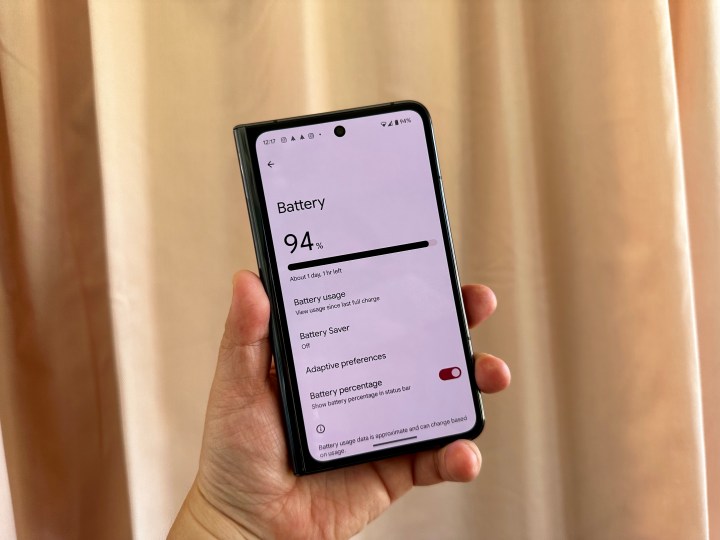
The Google Pixel Fold has a 4,821mAh battery inside, which is slightly less powerful than the 5,000mAh battery found inside the Pixel 7 Pro. In our original Pixel 7 Pro review, it was still just a one-day smartphone despite having such a large battery — and the same can be said for the Google Pixel Fold.
The Google Pixel Fold will last about the same as my iPhone 14 Pro.
I’ve been testing the Pixel Fold for the past week, and with heavy use, the phone will end up with about 20% to 30% battery by the end of the day (after starting at 100%). I’ve used it frequently to check my work email and messages, for social media, streaming movies and music, web browsing, playing Diablo Immortal, and a lot of photo and video taking.
I’ve been picking up the Pixel Fold over my primary iPhone 14 Pro whenever I can, especially for photos. It’s a little disappointing that, despite having a larger battery, the Google Pixel Fold will last about the same as my iPhone 14 Pro.
According to Google’s documentation, the Pixel Fold is definitely a 24-hour phone, but you can extend that to 72 hours with Extreme Battery Saver. You only get a USB-C cable in the box with the Pixel Fold (you’ll have to buy a power adapter separately), and it is capable of up to 30-watt fast-charging speeds. From my experience, I usually plug in around 20%, and it will take a little 90 minutes to get to 100%.
The Pixel Fold does support wireless charging with Qi-compatible charging pads, but only up to 7.5W, which is pretty slow. I typically don’t use wireless charging because of the slower speeds, so this won’t be changing.
It is disappointing that the Pixel Fold has slow wireless charging, considering that this is a device that starts at $1,799, after all. And to rub salt in the wound, unlike the Pixel 7 and Pixel 7 Pro, there is no reverse wireless Battery Share charging either.
Google Pixel Fold: price and availability

If you’re considering the Google Pixel Fold, remember that it doesn’t come cheap. You can purchase one directly from Google, or you can find it at your preferred carrier stores.
It comes in two colors: Obsidian or the Google Store-exclusive Porcelain, which looks like an off-white/beige hue with gold accents. The Pixel Fold starts at $1,799 for the 256GB version, and the 512GB variant is $1,919.
Google Pixel Fold: verdict
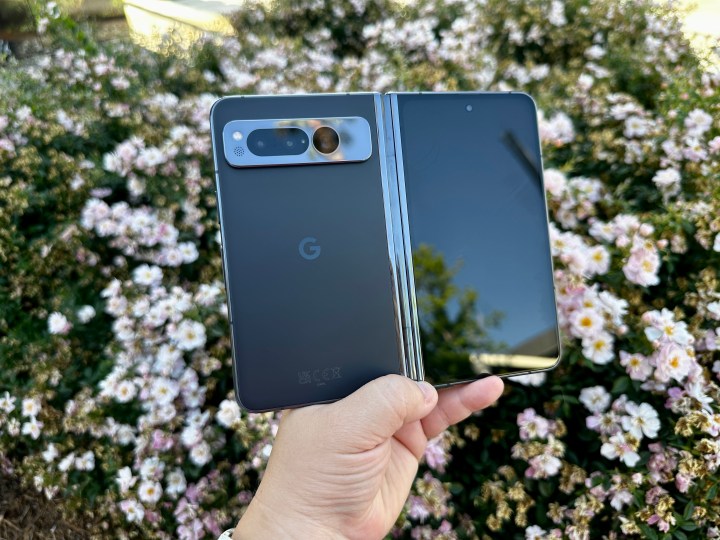
Despite some quirks with apps on the inner display, I’ve been thoroughly enjoying the Google Pixel Fold. In fact, if I was planning to ditch my iPhone and the Apple ecosystem completely, I think I’d pick the Google Pixel Fold as the phone to switch over to.
The 5.8-inch size of the cover display is, for me, perfect, as it feels like another regular phone, and I can even use it one-handed. It also fits in my pants pockets and purses with ease. And if I need more screen, I just open it up to reveal the nicely sized 7.6-inch inner screen, which almost feels like an iPad mini. It’s basically a perfect-sized mini tablet when I need a little more space for reading or watching things or even being more productive on the go. I also like that it’s not too hard to unfold the device; it’s not a one-handed operation like a flip phone, but it’s still easy and enjoyable. And barely having a gap between the two halves when closed is also a plus, as that’s less dust and debris to deal with.
The displays are also just downright beautiful, with bright colors that pop without being oversaturated. The 120Hz refresh rate means everything is smooth and fluid on both screens, and there’s no lag. Google’s Tensor G2 chip that powers everything is fast and snappy, though I do wish Google would solve the overheating issue and make the battery life last more than one day.

Multitasking on the Google Pixel Fold is also a breeze. The split-screen mode looks and feels similar to iPadOS for me, so it’s natural and intuitive. Tabletop mode and reverse camera selfies are also welcome additions to my toolkit for entertainment and photography.
However, this is Google’s first attempt at a foldable, and while it’s a good start, it’s certainly not perfect. I wish that the front cover display used something stronger, like Gorilla Glass Victus 2. I noticed a few micro scratches already on the cover display after just a few days of use, which isn’t great for a $1,799 device. I also want to see better power efficiency from the Tensor G2 chip because the phone does start to get warm if you’re doing a lot of things at once or for an extended period of time. Battery life should also be more than one full day, given the almost 5,000mAh battery.
And then there’s the inconsistency with certain apps on the inner display. It takes some tinkering around with rotating the device to get some to work, but otherwise, I’ll just have to use them on the cover display only. Maybe this isn’t entirely Google’s fault, but it still brings down the user experience. It would also be good if Google could figure out how to make the inner display more reliable and durable than its current state, which seems prone to issues, though that’s also the risk you take with a foldable.
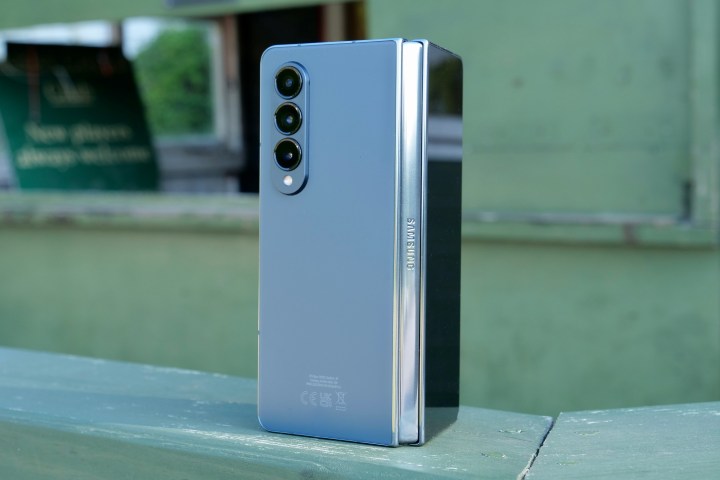
There’s also a growing market for foldables that Google has to compete with. The Samsung Galaxy Z Fold 5 is currently out, which also starts at $1,799. Both are very similar, with a 7.6-inch inner display, but the Galaxy Z Fold 5 has a much taller and narrower 6.2-inch cover display that can be awkward to use — especially one-handed.
The Fold 5’s triple-lens camera system has a 50MP main shooter, 10MP telephoto with 3x optical zoom, and 12MP ultrawide, so it’s slightly better on that front. But the inner camera is only 4MP, with the cover display having a 10MP camera. Its endurance is also slightly worse with a 4,400mAh battery. It does multitasking better by letting you have more than two apps going at once, so that’s a plus for those who want to be extra productive.
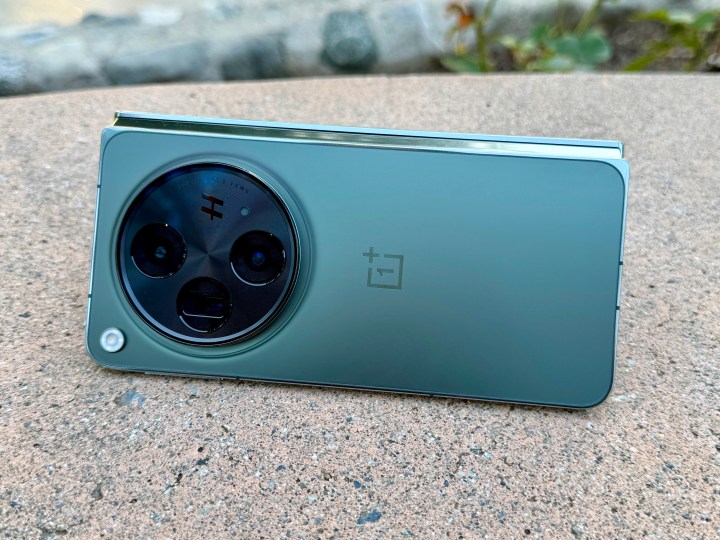
OnePlus also released its first foldable phone with the OnePlus Open. It has a slightly larger 6.3-inch cover display and opens up to reveal a 7.8-inch inner display. The Open also has an anti-reflective coating on the inner display, and both screens can reach up to 2,800 nits peak brightness, making it one of the more usable foldables no matter what situation you’re in. It has a triple-lens Hasselblad camera system with 48MP main, 64MP telephoto, and 48MP ultrawide, along with a 20MP inner selfie camera and 32MP cover display selfie camera — all of which are incredibly impressive for a foldable. The battery is similar at 4,805mAh but can charge up to 67W speeds. It’s also slightly cheaper, with a starting price of $1,700.
The Pixel Fold could have easily been a hot mess, but it really isn’t. Increased competition makes it a harder sell than it was at launch, but if you want the Pixel experience in a foldable form factor, the Pixel Fold remains your only option. While not perfect, it’s a promising first step for Google’s foldable journey.




